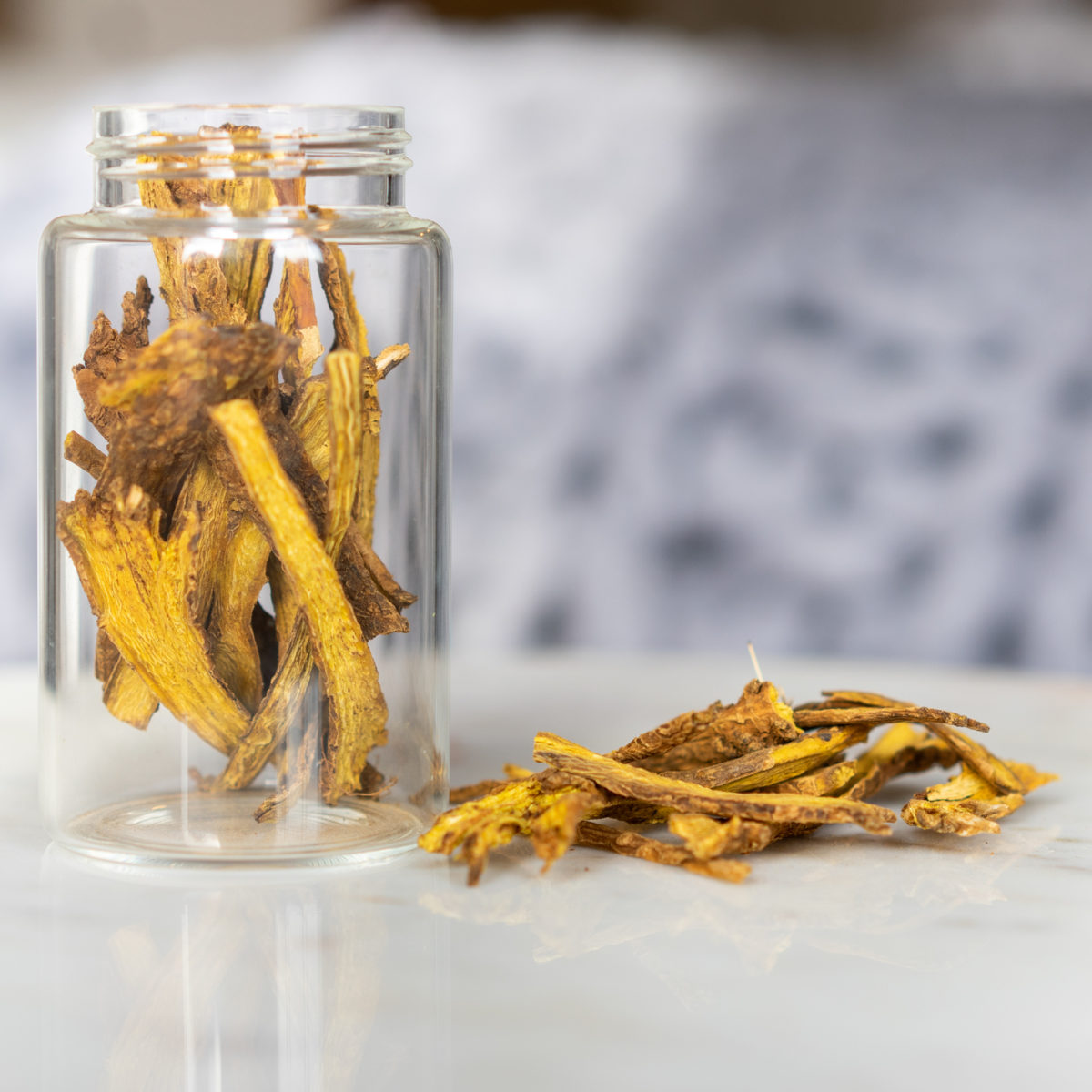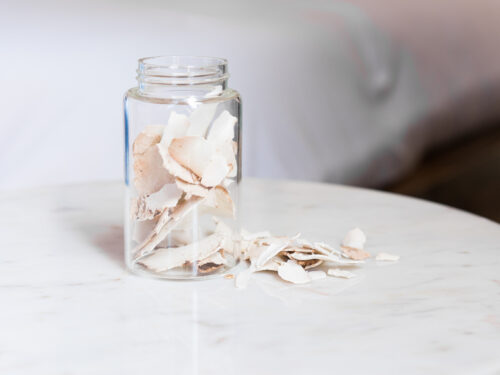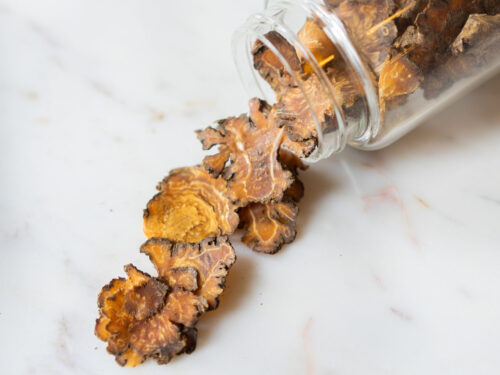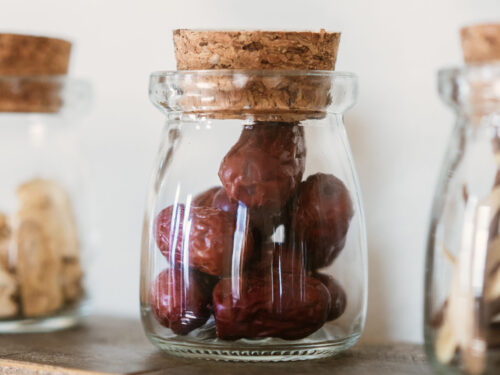
COMMON NAME (Chinese Name)
Baikal Skullcap, Scute (Huang qin)
BOTANICAL NAME
Scutellaria baicalensis
USES
The most common traditional purposes for Baikal skullcap supplementation include the treatment of: microbial infections, diarrhea, inflammation, insomnia, and respiratory infections. Baikal skullcap owes this therapeutic versatility to the anti-inflammatory, antibacterial, antiviral, and anticonvulsant properties of the compounds most abundantly concentrated in the plant’s roots and rhizome. As a dietary supplement, Baikal skullcap may also have anti-obesity properties (helping users lose weight and abdominal fat), though much more research is needed to validate its safety and efficacy for this use. Likewise, some studies suggest that it may help reverse obesity-related digestive and metabolic conditions by reducing inflammation as well as regulating gut bacteria and digestive functions.
Contemporary research also finds that Baikal skullcap supplementation has significant measurable impacts on cardiovascular function, as orally-administered extracts have vasodilating, anti-inflammatory, anti-hypertensive, anti-clotting, and antispasmodic properties. These effects are likely closely related to its anecdotal efficacy as a therapeutic intervention for respiratory infections and fevers.
Additionally, Baikal skullcap extract has a long history of use as a topical treatment for psoriasis and other inflammatory skin conditions.
In Chinese medicine, Baikal skullcap is categorized as an herb that clears fever and drains dampness, so is frequently used in TCM for high fevers with yellow phlegm. It is classified as bitter and cold and primarily affects the Large Intestine, Gallbladder, Stomach and Lung meridians.
Baikal skullcap makes up one of the “Three Yellows” a very important group of anti-fever herbs that are yellow in color. Together with Coptis and either Phellodendron or Chinese Rhubarb, the combination of yellow herbs makes up a building-block formula that cools and fights pathogens at three levels of the torso, with Bbaikal skull affecting the upper part. It’s important to note that this is the only one of the yellows that does not contain berberine, relying on its flavonoids and antioxidants instead.
PREPARATION & ADMINISTRATION
Not to be confused with the similarly-named “North American Skullcap” (Scutellaria lateriflora), which — though it is a related variant of the species — provides very different medicinal benefits compared with Baikal skullcap. What’s more, the suggested dosage amounts vary greatly between the two varieties. If you took the same amount of North American as you do Baikal skullcap, you might experience liver damage.
The roots and rhizomes of Baikal skullcap plants are the most commonly used components for both traditional and contemporary medicinal purposes. In preparation for use, Baikal skullcap roots and rhizomes are washed, briefly steamed, sliced, and then dried for future use. Both topical and oral preparations almost always call for decocting the dried root slices and forming a concentrated extract. Many stores carry both dried and sliced Baikal skullcap roots and rhizomes for at-home decoction as well as pre-processed extracts.
PRECAUTIONS
Given the impacts of oral use on cardiovascular function, you should not take Baikal skullcap supplements of any kind if you have a pre-existing cardiovascular condition or are currently taking medication(s) related to platelet aggregation, blood thinning or clotting, blood pressure, cholesterol, etc. Additionally, both oral and topical Baikal skullcap use may cause estrogen-like hormonal changes, so women who are pregnant or trying to become pregnant and people undergoing hormone replacement therapy should not take it.
You should consult with a certified herbalist, physician or other qualified healthcare professional before taking Baikal skullcap.
REFERENCES
Chatterjee, Shampa, et al. Immunity and Inflammation in Health and Disease: Emerging Roles of Nutraceuticals and Functional Foods in Immune Support. Academic Press, 2018.
Chen, John, Chen, T & Cramton, L.” Chinese Medical Herbology and Pharmacology” Art of Medicine Press, Inc. City of Industry, CA USA. 2003. 1327 pp ISBN: 0-9740635-0-9 , http://aompress.com/herbology
Habtemariam, Solomon. Medicinal Foods as Potential Therapies for Type-2 Diabetes and Associated Diseases: the Chemical and Pharmacological Basis of Their Action. Academic Press, an Imprint of Elsevier, 2019.
Han, Kyungsun, et al. “In Vivo Therapeutic Effect of Combination Treatment with Metformin and Scutellaria Baicalensis on Maintaining Bile Acid Homeostasis.” Plos One, vol. 12, no. 9, June 2017, doi:10.1371/journal.pone.0182467.
Nabavi, Seyed Mohammad, and Ana Sanches Silva. Nonvitamin and Nonmineral Nutritional Supplements. Academic Press, 2019.
Raditic, D.M., and J.W. Bartges. “The Role of Chondroprotectants, Nutraceuticals, and Nutrition in Rehabilitation.” Canine Rehabilitation and Physical Therapy (Second Edition), W.B. Saunders, 13 Nov. 2013, https://www.sciencedirect.com/science/article/pii/B9781437703092000156.



